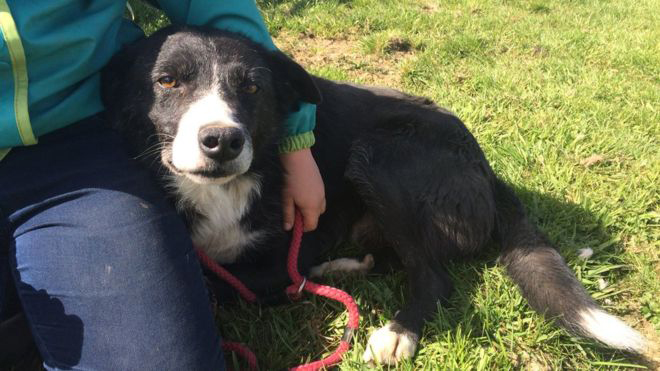
Last month, an English sheepdog shocked its former owners by turning up on their doorstep in Ceredigion, Wales, after they had given him to another farm in Cockermouth, Cumbria, some 240 miles away.
Amazingly, it seems as though, over a periods of two weeks, Pero (positively identified through his microchip) had negotiated the epic journey all on his own, without so much as a map to guide him. He didn’t even appear hungry or tired after arriving—just excited to see his owner, Alan James—which suggests he’d negotiated food and lodging along the way.
Now, how the flip could that be possible?
The short answer is, we don’t know. Not even the preeminent scientific minds of the world can figure it out, just like they don’t really know the nitty gritty of how homing pigeons get back to their roosts after being released in strange locations, or how migratory animals ranging from humongous humpback whales to itty bitty birds and eels manage to navigate vast distances across the globe.

It’s a most intriguing enigma. But Dr Jacqueline Boyd, a lecturer in Animal Science at Nottingham Trent University, has a few ideas about how Pero pulled off his impressive stunt, and she has written about them in The Conversation.
At Love Nature, we’ve just covered the incredible study that revealed how dung beetles use scans of the sky to find their way around, establishing their location and the best direction to go in by studying the relative position of the sun the moon and the stars compared to where they were the last time they’ve seen them.
On top of this, Dr Boyd explains how desert ants use odour plumes (clouds of wind-wafted scent wafted) to do the commute between their nest and the nearest food outlet. Turtles and spiny lobsters use magnetic fields to get around, and birds and seals go one step further, by incorporating the sun and certain stars into their internal compass.
It’s possible that dogs could use certain elements of these animals’ skill sets to perform seemingly miraculous feats of navigation. Dr Boyd writes that recent evidence has shown dogs and some primates possess a molecule associated with magnetoreception–the ability to sense a magnetic field–which might help explain Pero’s return home.
She goes on to explain that a light-sensing molecule that’s found in photoreceptors in the eyes of migratory birds is also located in the exact same place in some mammals, including dogs, foxes and wolves.
‘[This molecule] might suggest that the ability to respond to magnetic positional information is maintained in birds and some mammals,’ argues Dr Boyd. ‘Indeed, magnetoreception has been documented in different mammal species, leading to the suggestion that dogs might even defecate in response to the earth’s magnetic field.’
Wait, what? Dogs poo in alignment with the planet’s magnetic field? Yes, really, someone has collected scientific evidence demonstrating that ‘Dogs preferred to excrete with the body being aligned along the North–South axis under calm MF [magnetic field] conditions…’
But what about Pero—did he tap into his internal compass to get himself home? Was he driven by a innate reward reflex, did he follow poo pointers from fellow pooches, or does it all boil down to what Dr Boyd describes as the ‘intense olfactory ability of dogs,’ (i.e., they have a terrific sense of smell, which she argues is also likely to assist with their location awareness)?
It would have to be a pretty powerful pong to pull him home from 240 miles away. Perhaps he just didn’t want to live in a place called Cockermouth…
